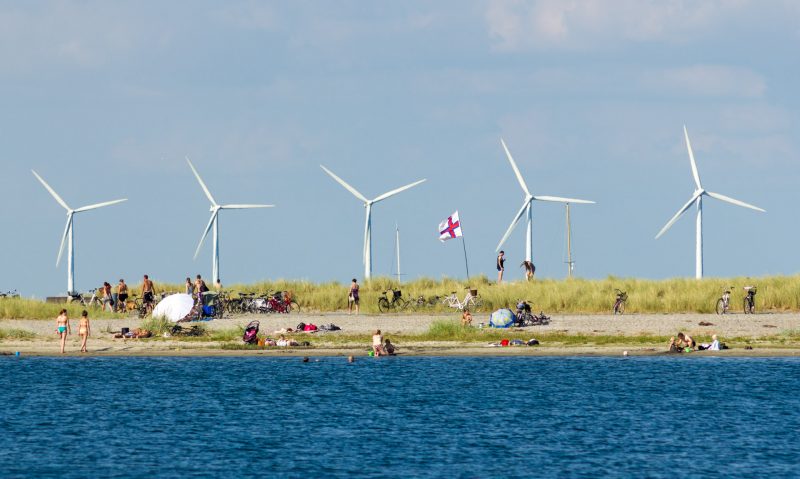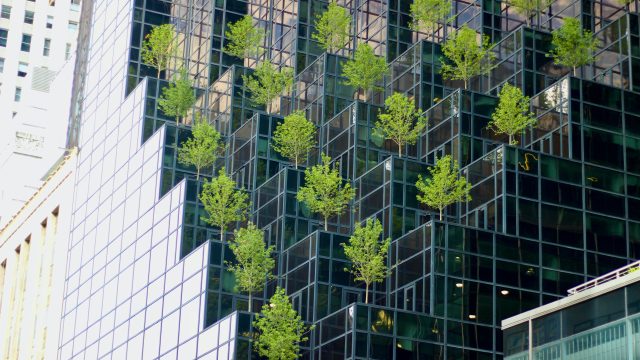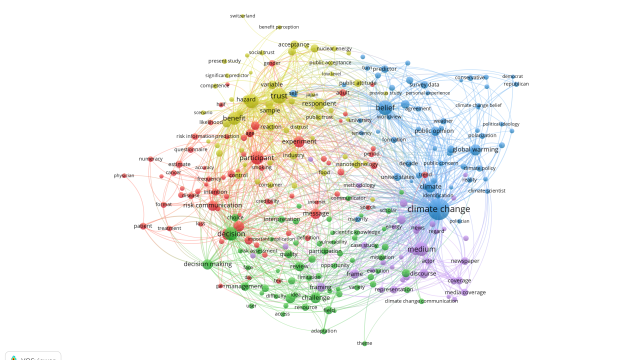Communal ownership drives Denmark's wind revolution

When built in 2000, the Middelgrunden off-shore windfarm was not only the world’s largest – it was co-funded, co-managed and co-owned by the people of Denmark
Off the coast of Copenhagen, twenty wind turbines are arranged in a graceful curve, easily visible from the shore. But far from inciting complaints or protests, the Middelgrunden wind farm enjoys remarkable popular support. That’s because the local community has been involved from day one: ordinary Danes were closely involved with development, helped fund the installation, and own a 50% stake in the revenues.
People power
“If you own shares in a project, when you look over at that turbine, with each turn of the blades, that's cash to you,” Justin Gerdes, energy expert and Copenhagen resident, says. “It's a nice way to reframe what clean energy means to people.”
Since its construction in 2000, Middelgrunden has become a symbol of Denmark’s community-centred approach to renewables. The project was first mooted as far back as 1993, and consultation with residents started soon after. Over 50,000 locals ultimately took part, helping shape everything from the placement of the turbines to the drafting of contracts.
As the project started to take shape, developers invited the community to invest in the scheme. By buying shares in the Middelgrunden energy cooperative, some 8500 Danish citizens raised €23 million euros – half the project’s total cost – and thus became equal partners in the new windfarm.
“Today, we have all the money back and you get about seven percent every year,” said Hans Christian Sørensen, who sits on the cooperative’s board. “People are quite satisfied with this because it is much better than having it in a bank, and at the same time, you are doing something positive for the environment.”
Traditional model, cutting-edge technology
Collective ownership has deep roots in Denmark. Many banks, dairies and food shops have been run as co-ops for centuries, and communities have been financing individual wind turbines – to power a village or farm, say – since the 1970s. Inspired by the Middelgrunde example, other energy cooperatives soon followed across the country. And in 2011, the Danish government decreed that new wind farms must be at least 20% community-owned.
Gerdes believes that this people-first approach has helped propel Denmark to the cutting edge of the clean energy transition. “Not only is it a way to give people a stake in clean energy,” he explains, “it's also a great way to avoid the conflicts that sometimes arise when projects are proposed near where people live.” It seems to be working: Denmark generated almost 40% of its electricity from wind in 2016, and is well on track to hit its target of 50% by 2020.
Christian Eriksen, who manages another community energy scheme in Sønderborg, argues that the bottom-up approach will help Denmark hit its target of being 100% fossil-free by 2050: “not by killing the power, but [through] sustainable growth and creating bright green jobs.”
To get there, he adds, a holistic approach is essential. “It’s not just top-down planning and coming up with business and new technology to drive this forward. It’s also very much about participation, about learning, and empowerment of our citizens and local companies.”
Impact
-
People
8500 Danes co-financing clean energy for Copenhagen
-
Planet
On track to hit 100% renewables by 2050
-
Prosperity
Energy revenues returned to local communities
Find out more:
- A detailed guide to the Middelgrunden project and the cooperative that made it happen.
- A deep dive into the history of energy cooperatives in Denmark, and the lessons for the German Energiewende.
- This piece from 2012 explores how community projects have contributed to Denmark’s wind energy revolution.


